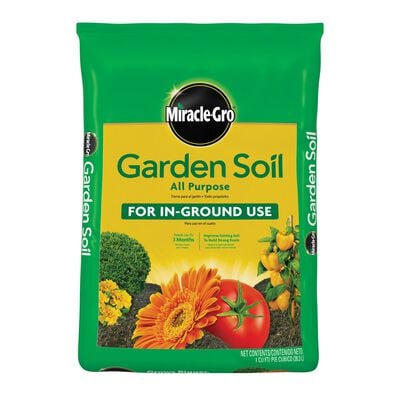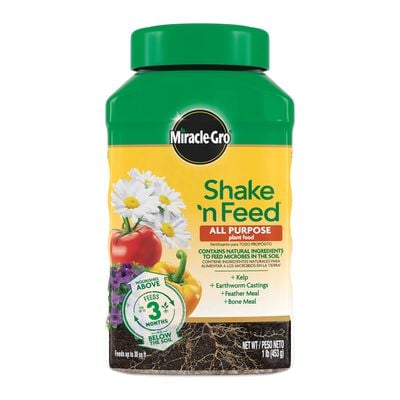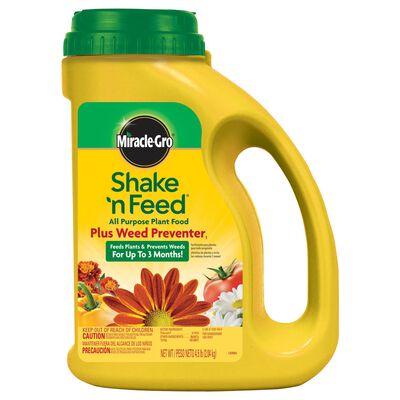
Drought-Tolerant Plants for Your Landscape and Garden
Here are some plants to consider adding to your drought-tolerant landscape.
While drought-tolerant plants can't get by on zero water, they can endure—and even thrive—through long stretches of high-heat, no-rain days. Taking this kind of thoughtful approach to landscaping that requires minimal water is called xeriscaping (from Greek word xeros, meaning "dry"). Here's how it works: Instead of attempting to create a lush garden of Eden with lots of irrigation and sweat, you instead work with your natural surroundings and environmental conditions. Conserving water doesn't reduce the beauty, though. There are many colorful, easy-care options for plants that thrive in low-water landscapes.
How strong and vigorous your plants are have a big effect on their ability to stick it out during a dry spell, so help increase your odds of success by planting your drought-tolerant plants in rich soil filled with just the right nutrients. Mix Miracle-Gro® Garden Soil for Cactus, Palm & Citrus (for cacti and other succulents) or Miracle-Gro® All Purpose Garden Soil (for all other plants) in with your of native soil before planting, then be sure to water regularly until roots have a chance to dig into the new soil. After a month, feed plants with Miracle-Gro® Shake ‘n Feed® All Purpose Plant Food Plus Weed Preventer1 to ensure they keep on getting all the nutrition they need while fighting pesky weeds (be sure to follow the directions). You may also want to add several inches of mulch around your plants to help keep what little moisture there is in the soil from evaporating before your plants can put it to good use. Bonus: Mulch can also help prevent weeds by cutting off their access to sunlight.
Here are some plants to consider adding to your drought-tolerant landscape. Don't worry if you aren't familiar with some of the names, either, as they're all easy to find.
Drought-Tolerant Flowers
- Black-eyed Susan, a knock-out yellow bloomer in the sunflower family;
- Ice plant, a hardy groundcover with carpets of bright blooms, available in many colors;
- Tickseed, which produces a mound of vibrant blooms despite heat or drought;
- Sage or salvia, easy-care, pest-resistant flowers with colorful blooms and scented foliage;
- Lantana, a butterfly magnet that produces blooms in shades of orange, pink, red, or yellow;
- Blanket flower, a fuzzy-leaved, daisy-shaped bloomer also beloved by butterflies;
- Zinnia, one of the easiest cutting flowers to grow from seed;
- Sunflower, with deep roots and rough foliage that protect sunflowers against periods without rain.

- Edible herbs originating in climates like the hot, dry, sandy Mediterranean:
- Lavender
- Rosemary
- Thyme
- Tarragon
- Sage
- Oregano
- Yarrow, with delicate, feathery foliage and lace-like blooms that come in a wide variety of colors.
Drought-Tolerant Grasses & Perennials
- There are hundreds of varieties of drought-tolerant ornamental grasses, including the popular pink muhly grass and purple fountain grass;
- Wormwood, also called absynthe wormwood, with eye-catching textured, silver-gray foliage;
- Succulents, a family of plants with water-filled branches that are either pokey or plump, including:
- Agave
- Cactus
- Sedum
- Sempervivum
Drought-Tolerant Trees & Evergreen Shrubs
- Pines, such as short leaf, loblolly, eastern white, and longleaf, with long taproots and thin, small needles that prevent moisture loss;
- Wax myrtle, an evergreen shrub that’s happy in sun, part shade, salty air, or dry gardens;
- Juniper, with options ranging from low-growing groundcovers to tall, pyramidal trees.
See, there’s no need to skip the landscaping just because you live in an area that’s exceptionally dry or prone to drought. Create your own oasis with a few of the drought-resistant plants that sound most intriguing to you—then smile to yourself, thinking of all the time you’ll save on watering.


